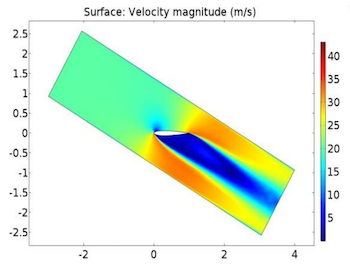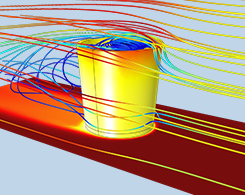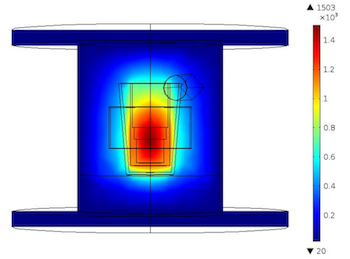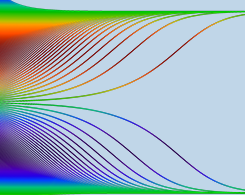Fluid & Heat Blog Posts

Why Should I Use Automatic Wall Treatment for My CFD Modeling?
The automatic wall treatment functionality enables you to use low Reynolds number models for a wider range of CFD problems, but there are some factors to consider before implementing the feature.

Improving Vertical-Axis Wind Turbine Efficiency with CFD Simulation
Vertical-axis wind turbines are easier to install and maintain than horizontal-axis devices, but they also have low peak efficiencies and struggle with starting torque. Enter CFD simulation.

How to Model Heat and Moisture Transport in Porous Media with COMSOL®
Modeling the transport of heat and moisture in porous media, like building envelopes and other construction materials, is a simple process with a predefined Heat and Moisture Transport interface.

How to Model Heat and Moisture Transport in Air with COMSOL®
First, we discuss how to model heat transport in moist air. Then, we add complexity by demonstrating how to couple heat and moisture transport in air in your simulation.

Optimizing Microwave Furnaces for Solar-Grade Silicon Production
For silicon to be considered “solar grade”, it has to be 99.9999% pure. Therefore, microwave furnaces used to produce solar-grade silicon need to be optimized for quality and efficient output.

Benchmark Model Shows Reliable Results for Inertial Focusing Analysis
Inertial focusing involves the migration of particles through a channel. This benchmark model analyzes particle behavior in an inertial focusing process with validated, reliable results.

Studying the Artificial Ground Freezing Method with Simulation
Artificial ground freezing (AGF) is a valuable process in the construction industry. Researchers from China modeled groundwater flow to optimize an artificial ground freezing (AGF) process.

How to Use the v2-f Turbulence Model in the CFD Module
The v2-f turbulence model is an effective option for simulating highly nonlinear turbulent flow problems with both the accuracy and robustness of other, more limiting methods.
